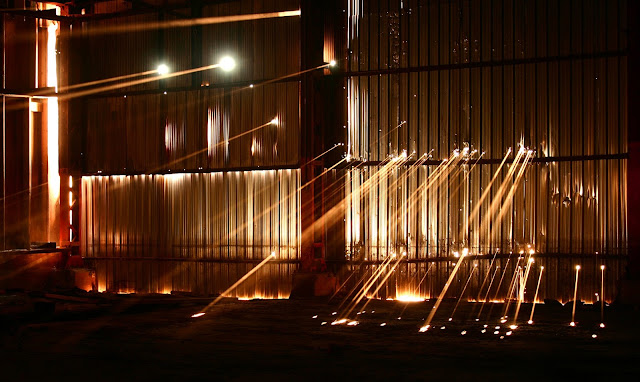The artistic charm of lighting
Lighting is an art
The difference between the scene in front of the camera and the image displayed on the screen must be correctly estimated. This deliberate change requires imaginative foresight and considerable experience. Lighting designers need to patiently use one lamp after another to create the lighting scene effect, showing a sense of atmosphere combined with light and shadow on the screen, thereby controlling our attention and inspiring our emotions. Lighting is also a form of artistic creation. The lamp is like a paintbrush in the hands of a painter and a knife in the hands of a sculptor. The lighting engineer can use the lamps in his hands to The artistic charm of lightingcreate a variety of light according to the needs of the plot, expressing the director's understanding of the plot, feelings of the theme, and passing different lights Express feelings.
Lighting method
In lighting design, there are many ways to process pictures. Sunmory lighting will introduce the following three ways to express the three-dimensional world in flat painting:
Flat light method. This method is to draw people's attention to the outline of the entity illuminated by the light, expressing colors and details but does not highlight the three-dimensional form of the subject, resulting in a dull two-dimensional effect. This effect can be achieved with flat, relatively low contrast between light and dark lighting and a small amount of backlighting to eliminate shadows as much as possible.
Silhouette method. The purpose of this method is to express the outline of the object. The main body is placed in front of a bright background, and the main body is not lighted. The color, tone, surface structure, and surface modeling of the subject are completely hidden from human vision.
Contrast method. Controls the level of light tones and the brightness of each plane, showing a certain shadow, highlighting the subject's sense of subjectivity and depth, and creating a certain contrast between light and dark. This method is the most common picture style, with an eye-catching and infectious power.
The effect of the picture processing
According to the needs of different plots, the screen effect is vivid and lively. There are also different requirements for the prominent part of the scene. Picture-oriented lighting processing method: one is to use a comprehensive lighting method. This kind of lighting puts the entire performance area under floodlighting, which highlights the visibility of things. The second is to use the overall lighting method. In this way, attention should be paid to the headlights. In order to achieve a more complete and clear goal and increase the level of the entire scene, it is necessary to carefully arrange the backlight and sidelights. The light source can be an LED floor lamp but pay attention to the balance with the front light.
The rendering of the atmosphere
The rendering of the atmosphere is that we are exposed to a very subtle picture processing method. The atmosphere of the environment can be decorative, natural, or abstract. Only after careful analysis of the pictures can we see the difference between the specific light and shadow and the actual life. In addition, sometimes for the requirements of the picture, an abstract effect is produced, expressing fantasy or a wonderful scene, using light and shadow patterns to directly simulate the association, and the effect produced is stimulating, interesting, and touching. Sometimes it feels scary.
The guiding role of lighting
In any environment, any object first needs the intervention of light to enter human vision, and the medium between them is light. The situation of the character's environment, the image of the object, and even the size of the space must be illuminated by light. In the filming work of any venue, the live space of the performance is organized by light. The larger the space irradiated by light, the larger the spatial range of people's visual perception. Even if the space is very large, if the light only illuminates a certain area, then the space that is not in the completed illumination range will have no meaning in people's vision.
Lighting changes
For lighting changes to be effective, they must be noticeable. By lighting, you can rearrange the focus and light and dark configuration of the picture, thereby changing the overall composition balance of the picture. We can create a subtle sense of three-dimensional limitation by gradually changing the color effect of lighting, which can change the direction of attention, change the tone balance and tone, or change the expressiveness, static and focus of the picture. At the same time, we can also change the relative prominence to change the spatial relationship, perspective, three-dimensional sense, shape, and texture. This change in lighting is an extremely contagious function of lighting art.
The shaping of the object by light is achieved by illuminating the object with several lights from various chromaticities, and the audience sees the image of an object illuminated from multiple angles. If you change the position and illumination angle of the lamp, the audience will get a different image of the object from the front. If only the illumination of the light is changed, the image of the object will also change. If the illuminance does not change, the angle position does not change, and the light color of the light is changed, the image of the object will still change, and if the lighting range of the light is changed, its image will also change. If the position, chromaticity, light color, and illumination range of the light are changed, the image of the object will change even more.


Comments
Post a Comment